Tag Archives: Deep Learning
Python Keras – Learning Curve for Classification Model
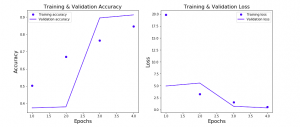
In this post, you will learn about how to train an optimal neural network using Learning Curves and Python Keras. As a data scientist, it is good to understand the concepts of learning curve vis-a-vis neural network classification model to select the most optimal configuration of neural network for training high-performance neural network. In this post, the following topics have been covered: Concepts related to training a classification model using a neural network Python Keras code for creating the most optimal neural network using a learning curve Training a Classification Neural Network Model using Keras Here are some of the key aspects of training a neural network classification model using Keras: …
Keras Multi-class Classification using IRIS Dataset
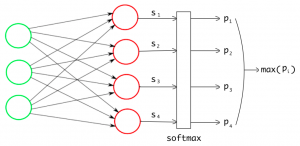
In this post, you will learn about how to train a neural network for multi-class classification using Python Keras libraries and Sklearn IRIS dataset. As a deep learning enthusiasts, it will be good to learn about how to use Keras for training a multi-class classification neural network. The following topics are covered in this post: Keras neural network concepts for training multi-class classification model Python Keras code for fitting neural network using IRIS dataset Keras Neural Network Concepts for training Multi-class Classification Model Training a neural network for multi-class classification using Keras will require the following seven steps to be taken: Loading Sklearn IRIS dataset Prepare the dataset for training and testing …
Top Tutorials – Neural Network Back Propagation Algorithm
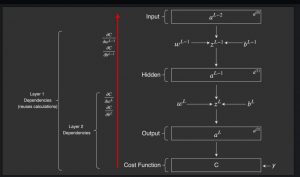
Here are the top web pages /videos for learning back propagation algorithm used to compute the gradients in neural network. I will update this page with more tutorials as I do further deep dive on back propagation algorithm. For beginners or expert level data scientists / machine learning enthusiasts, these tutorials will prove to be very helpful. Before going ahead and understanding back propagation algorithm from different pages, lets quickly understand the key components of neural network algorithm: Feed forward algorithm: Feed forward algorithm represents the aspect of how input signals travel through different neurons present in different layers in form of weighted sums and activations, and, result in output / …
Neural Networks and Mathematical Models Examples
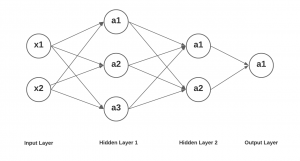
In this post, you will learn about concepts of neural networks with the help of mathematical models examples. In simple words, you will learn about how to represent the neural networks using mathematical equations. As a data scientist / machine learning researcher, it would be good to get a sense of how the neural networks can be converted into a bunch of mathematical equations for calculating different values. Having a good understanding of representing the activation function output of different computation units / nodes / neuron in different layers would help in understanding back propagation algorithm in a better and easier manner. This will be dealt in one of the …
Adaptive Linear Neuron (Adaline) Python Example

In this post, you will learn the concepts of Adaline (ADAptive LInear NEuron), a machine learning algorithm, along with Python example.As like Perceptron, it is important to understand the concepts of Adaline as it forms the foundation of learning neural networks. The concept of Perceptron and Adaline could found to be useful in understanding how gradient descent can be used to learn the weights which when combined with input signals is used to make predictions based on unit step function output. Here are the topics covered in this post in relation to Adaline algorithm and its Python implementation: What’s Adaline? Adaline Python implementation Model trained using Adaline implementation What’s Adaptive …
Yann LeCun Deep Learning Free Online Course

This post is about listing down free online course materials for deep learning (PyTorch) by none other than Yann LeCun. Here are some useful links to the deep learning course: Deep Learning course – Homepage Deep learning lecture slides Github pages having Jupyter notebooks having PyTorch code Lectures slides, notebooks and related YouTube videos can be found on the deep learning (DL) course home page. It is a 14 week course and covers different topics such as following: Introduction to deep learning (What DL can do, what are good features / representations) Gradient descent and back propagation algorithm Artificial neural networks Convolution neural networks (Convnets) and related applications Regularization / Optimization …
Deep Learning Explained Simply in Layman Terms
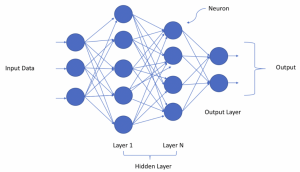
In this post, you will get to learn deep learning through simple explanation (layman terms) and examples. Deep learning is part or subset of machine learning and not something which is different than machine learning. Many of us when starting to learn machine learning try and look for the answers to the question “what is the difference between machine learning & deep learning?”. Well, both machine learning and deep learning is about learning from past experience (data) and make predictions on future data. Deep learning can be termed as an approach to machine learning where learning from past data happens based on artificial neural network (a mathematical model mimicking human brain). …
Keras Hello World Example
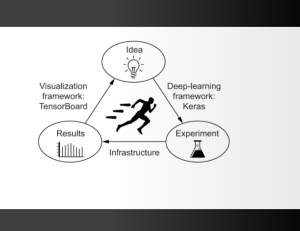
In this post, you will learn about how to set up Keras and get started with Keras, one of the most popular deep learning frameworks in current times which is built on top of TensorFlow 2.0 and can scale to large clusters of GPUs. You will also learn about getting started with hello world program with Keras code example. Here are some of the topics which will be covered in this post: Set up Keras with Anaconda Keras Hello World Program Set up Keras with Anaconda In this section, you will learn about how to set up Keras with Anaconda. Here are the steps: Go to Environments page in Anaconda App. …
PyTorch – How to Load & Predict using Resnet Model

In this post, you will learn about how to load and predict using pre-trained Resnet model using PyTorch library. Here is arxiv paper on Resnet. Before getting into the aspect of loading and predicting using Resnet (Residual neural network) using PyTorch, you would want to learn about how to load different pretrained models such as AlexNet, ResNet, DenseNet, GoogLenet, VGG etc. The PyTorch Torchvision projects allows you to load the models. Note that the torchvision package consists of popular datasets, model architectures, and common image transformations for computer vision. Here is the command: The output of above will list down all the pre-trained models available for loading and prediction. You may …
How to install PyTorch on Anaconda
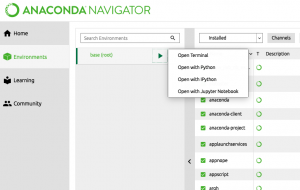
This is a quick post on how to install PyTorch on Anaconda and get started with deep learning projects. As a machine learning enthusiasts, this is the first step in getting started with PyTorch. I followed this steps on Mac Air and got started with PyTorch in no time. Here are the steps: Go to Anaconda tool. Click on “Environments” in the left navigation. Click on arrow marks on “base (root)” as shown in the diagram below. It will open up a small modal window as down. Click open terminal. This will open up a terminal window. Execute the following command to set up PyTorch. Once done, go to Jupyter Notebook window and …
Why Deep Learning is called Deep Learning?
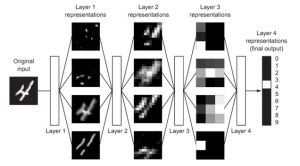
In this post, you will learn why deep learning is called as deep learning. You may recall that deep learning is a subfield of machine learning. One of the key difference between deep learning and machine learning is in the manner the representations / features of data is learnt. In machine learning, the representations of data need to be hand-crafted by the data scientists. In deep learning, the representations of data is learnt automatically as part of learning process. As a matter of fact, in deep learning, layered representations of data is learnt. The layered representations of data are learnt via models called as neural networks. The diagram below represents …
Deep Learning – Learning Feature Representations
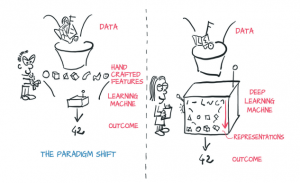
In this post, you learn about what is deep learning with a focus on feature engineering. Here is a quick diagram which represents the idea behind deep learning that Deep learning is about learning features in an automatic manner while optimizing the algorithm. The above diagram is taken from the book, Deep learning with Pytorch. One could learn one of the key differences between training models using machine learning and deep learning algorithms. With machine learning models, one need to engineer features (called as feature engineering) from the data (also called as representations) and feed these features in machine learning algorithms to train one or more models. The model performance …
I found it very helpful. However the differences are not too understandable for me